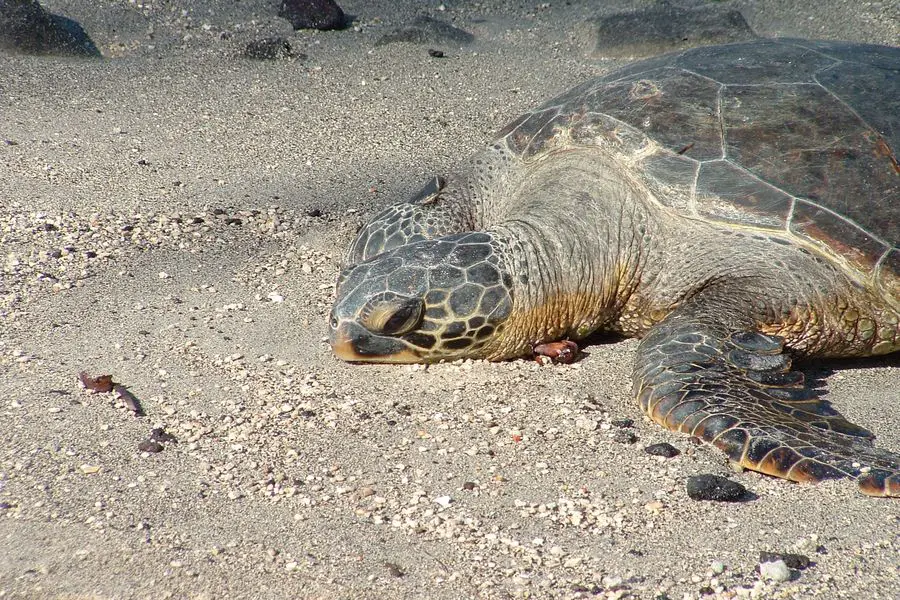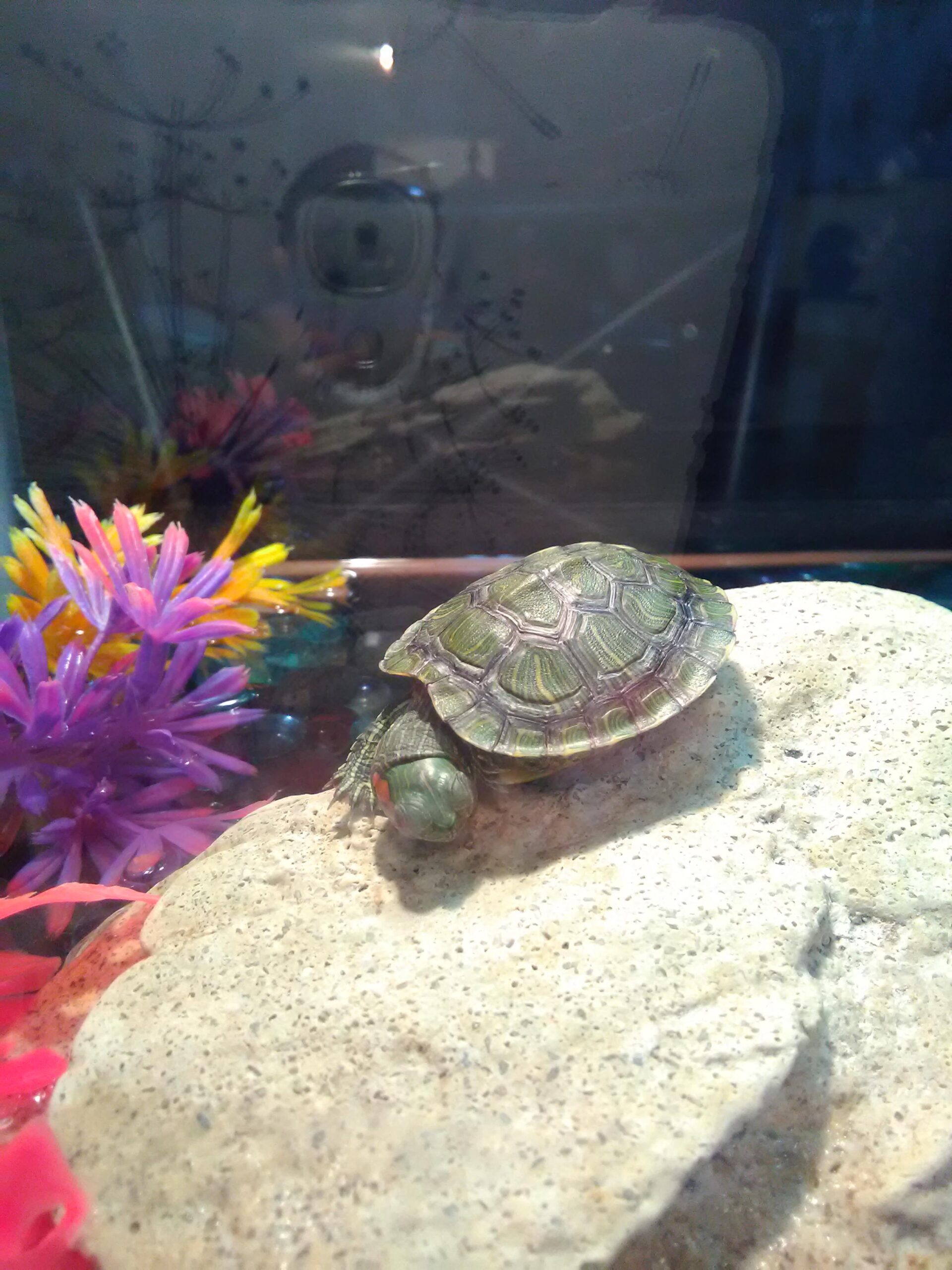If your turtle is sleeping a lot, it may be due to illness or stress. Ensure proper care and environment for your turtle’s health.
Turtles are ectothermic animals and will often sleep more in cooler temperatures. However, excessive sleeping could indicate a health issue. Factors such as improper diet, inadequate lighting, or poor water quality can also lead to increased lethargy in turtles. Observing your turtle’s behavior and consulting a vet if necessary can help determine the cause of its increased sleepiness.
By addressing any underlying issues, you can ensure your turtle remains healthy and active.
Common Causes Of Excessive Sleeping In Turtles
Improper Temperature Regulation
Turtles are ectothermic creatures, meaning they rely on their environment to regulate their body temperature. Incorrect temperature levels in their habitat can lead to turtles sleeping more than usual.
Poor Diet And Nutrition
A lack of essential nutrients in a turtle’s diet can cause them to feel lethargic and sleep excessively. Inadequate feeding habits may also contribute to this issue.
Health Issues
Turtles may exhibit increased sleeping patterns if they are suffering from health problems such as infections, parasites, or other illnesses. Regular veterinary check-ups are crucial to address any underlying health issues.

Credit: m.youtube.com
Understanding The Impact Of Improper Temperature Regulation
Improper temperature regulation can lead to excessive turtle sleepiness. Fluctuations in temperature disrupt their natural behaviors and may cause them to rest more than usual. Understanding the impact of temperature on turtles’ sleep patterns is crucial for their overall health and well-being.
Understanding the Impact of Improper Temperature Regulation Turtles are ectothermic creatures, relying on their environment to regulate their body temperature. When their basking spot temperature and UVB exposure are inadequate, it can have detrimental effects on their health and behavior. Effects of Incorrect Basking Spot Temperature Improper basking spot temperature can lead to lethargy and decreased appetite in turtles. They require a basking spot temperature of around 85-90°F to effectively regulate their body temperature. If the temperature is too low, they may become sluggish and spend excessive time basking to compensate. Inadequate UVB Exposure Insufficient UVB exposure can result in metabolic bone disease in turtles, leading to weakened bones and shell deformities. UVB radiation is crucial for the synthesis of vitamin D3, which is essential for calcium metabolism. Without proper UVB exposure, turtles may experience stunted growth and skeletal abnormalities. Proper temperature regulation is essential for the overall well-being of turtles. It is imperative to provide the appropriate basking spot temperature and ensure adequate UVB exposure to support their health and vitality.The Role Of Diet And Nutrition In Turtle Behavior
Turtle behavior can be influenced by their diet and nutrition, which includes their sleeping patterns. A lack of essential nutrients or an imbalanced diet can lead to excessive sleepiness in turtles. Ensuring a well-rounded diet with proper nutrients and vitamins is crucial in maintaining a healthy and active turtle.
Turtles are fascinating creatures that have been on earth for millions of years. They are known for their ability to sleep for long periods of time, but sometimes, excessive sleeping can be a sign of an underlying health issue. One factor that can affect a turtle’s behavior is diet and nutrition. In this article, we will explore the impact of diet and nutrition on turtle behavior, particularly the role of lack of essential nutrients and overfeeding in causing excessive sleeping.Lack Of Essential Nutrients
Turtles need a balanced and varied diet to stay healthy and active. A lack of essential nutrients in their diet can lead to a variety of health problems, including excessive sleeping. Some of the essential nutrients that turtles need include calcium, vitamin D3, and protein. Calcium is necessary for the development and maintenance of strong bones and shells, while vitamin D3 helps the body absorb calcium. Protein is essential for growth and development. If a turtle is not getting enough of these essential nutrients, it may become lethargic and sleep more than usual. This can be especially true for young turtles that are still growing and need plenty of nutrients to support their development. To ensure that your turtle is getting the right nutrients, feed it a varied diet that includes a mix of vegetables, fruits, and protein sources like insects, worms, and fish.Overfeeding And Obesity
Overfeeding can also lead to excessive sleeping in turtles. Turtles are opportunistic feeders and will eat as much as they can when food is available. However, overfeeding can lead to obesity, which can cause a variety of health problems, including lethargy and excessive sleeping. To prevent overfeeding, feed your turtle small amounts of food throughout the day instead of one large meal. This will help prevent your turtle from eating too much at once and becoming overweight. Also, be mindful of the type of food you are feeding your turtle. Stick to a balanced diet that includes a variety of foods and avoid feeding your turtle too many high-fat or high-calorie treats. In conclusion, diet and nutrition play a crucial role in the behavior of turtles. A lack of essential nutrients or overfeeding can lead to excessive sleeping and other health problems. By feeding your turtle a balanced and varied diet and avoiding overfeeding, you can help ensure that it stays healthy, active, and alert.Credit: www.quora.com
Identifying Potential Health Issues In Turtles
Respiratory Infections
Turtles can be prone to respiratory infections, which are often caused by poor living conditions, such as inadequate temperature or humidity levels. Symptoms of respiratory infections in turtles include excessive sleeping, lethargy, wheezing, and nasal discharge. If you notice any of these signs, it’s crucial to seek veterinary care promptly to prevent the infection from worsening.
Parasitic Infections
Parasitic infections are another common health issue in turtles. Symptoms may include weight loss, loss of appetite, lethargy, and abnormal feces. Regular fecal exams by a reptile veterinarian can help identify and treat parasitic infections before they cause significant harm to your turtle’s health.
Metabolic Bone Disease
Metabolic bone disease is a serious condition that affects the skeletal structure of turtles. It is often caused by inadequate UVB lighting, improper diet, or lack of calcium. Turtles with metabolic bone disease may exhibit weakness, deformities, and difficulty moving. Providing the appropriate UVB lighting and a well-balanced diet can help prevent this debilitating disease.
Creating A Suitable Habitat For Your Turtle
To understand why your turtle is sleeping excessively, ensure its habitat meets its needs. Provide a comfortable basking area, proper lighting, and a balanced diet to promote healthy activity levels and ensure your turtle’s well-being.
Creating a Suitable Habitat for Your Turtle Providing a suitable habitat for your turtle is crucial for its well-being. A well-maintained habitat can significantly impact your turtle’s activity levels and overall health. Here are some essential factors to consider when creating an ideal habitat for your turtle. Optimal Temperature and Lighting Conditions Maintaining the right temperature and lighting in your turtle’s habitat is essential for its well-being. Turtles are ectothermic, meaning they rely on external sources of heat to regulate their body temperature. Ensure that the basking area in the habitat reaches a temperature of 85-90°F, while the cooler area should stay around 75-80°F. A UVB lamp is crucial for turtles as it helps them metabolize calcium and prevents metabolic bone disease. Make sure to provide a 12-hour light cycle to mimic natural daylight and darkness. Balanced Diet and Feeding Schedule A balanced diet is essential for your turtle’s overall health and energy levels. Offer a variety of foods including commercial turtle pellets, leafy greens, vegetables, and occasional treats like live insects or small fish. Ensure that the food is appropriately sized to prevent choking and monitor the feeding schedule to avoid overfeeding or underfeeding. A well-fed turtle is more likely to be active and engaging. Incorporating these elements into your turtle’s habitat can significantly impact its activity levels, ensuring a happy and healthy pet.Consulting A Veterinarian For Proper Diagnosis And Treatment
It is natural for turtles to sleep for extended periods, as they are known for their slow and steady movements. However, excessive sleeping in turtles can be a sign of an underlying health issue. There are various reasons why a turtle might sleep too much, including inadequate lighting, temperature, nutrition, or stress. It is essential to monitor your turtle’s sleeping habits and consult a veterinarian if you notice any significant changes in their behavior.
Importance Of Regular Check-ups
Regular check-ups with a veterinarian are crucial in maintaining your turtle’s health. Your veterinarian can monitor your turtle’s weight, diet, and behavior and perform a physical examination to detect any potential health issues early. Early detection is key in treating any health condition, and regular check-ups can ensure your turtle is healthy and happy.
Diagnostic Tests And Procedures
If your veterinarian suspects an underlying health issue, they may recommend diagnostic tests and procedures to determine the root cause of your turtle’s excessive sleeping. These tests may include blood work, X-rays, or fecal exams. Diagnostic tests can help identify any health problems and provide your veterinarian with information necessary for proper treatment.
If your turtle is sleeping excessively, it is essential to consult a veterinarian for proper diagnosis and treatment. Your veterinarian will perform a thorough examination and recommend any necessary tests and procedures to determine the underlying cause of your turtle’s sleeping habits. They can then provide appropriate treatment to ensure your turtle is healthy and happy.
Remember, regular check-ups and prompt veterinary care can help ensure your turtle lives a long and healthy life.
Implementing Behavioral Enrichment Activities For Your Turtle
It’s essential to provide your turtle with stimulating activities to keep them active and engaged. Implementing behavioral enrichment activities is crucial for the overall well-being of your pet turtle. In this section, we will explore various ways to keep your turtle mentally and physically stimulated through the introduction of stimulating toys and encouraging physical activity.
Introduction Of Stimulating Toys
Introducing stimulating toys can provide your turtle with mental stimulation and prevent boredom. Some engaging toys for turtles include floating objects, toy balls, and puzzle feeders. These toys can encourage exploration and play, keeping your turtle active and entertained.
Encouraging Physical Activity
To encourage physical activity, consider creating a turtle-safe obstacle course within their enclosure. This can include ramps, platforms, and tunnels that promote movement and exploration. Additionally, placing live plants in the habitat can stimulate natural foraging behaviors and provide a source of mental enrichment.
Monitoring Your Turtle’s Sleeping Patterns And Behavior
Discovering why your turtle is sleeping excessively can be crucial. Observe its sleeping patterns and behavior to understand its health and well-being. Factors like temperature, diet, and stress levels can influence your turtle’s sleeping habits.
Monitoring Your Turtle’s Sleeping Patterns and Behavior Keeping a Sleep Log Creating a sleep log helps track your turtle’s sleeping patterns accurately. Use a simple notebook to record the time your turtle goes to sleep and wakes up. Include any observations about behavior during sleep times in the log. Observing Changes in Activity Levels Notice any changes in how active your turtle is during the day. A sudden increase or decrease in activity could indicate underlying health issues. If you see unusual behavior, consult a vet to ensure your turtle’s well-being.
Credit: www.careah.com
Conclusion
Understanding your turtle’s sleeping patterns is essential for their well-being. By recognizing the various factors that influence their sleep, such as age, environment, and health, you can ensure they are getting the rest they need. By providing a comfortable and safe habitat, along with regular check-ups, you can help your turtle maintain a healthy sleep schedule.






Leave a Reply